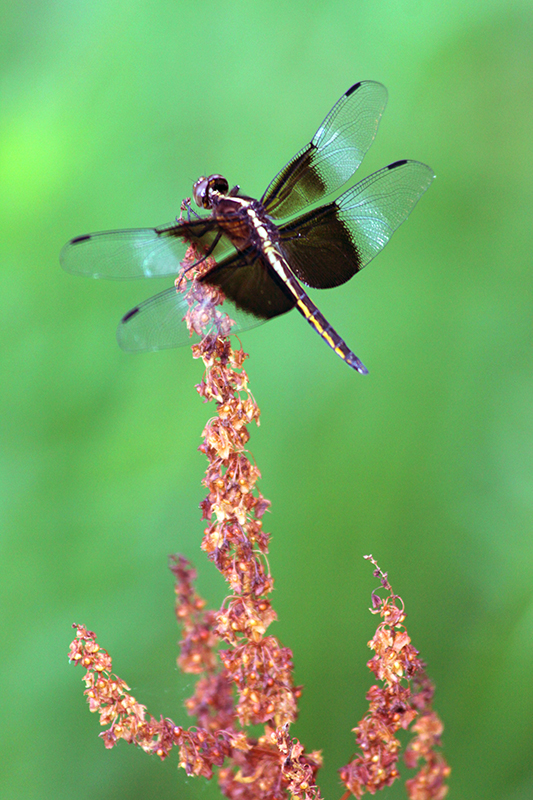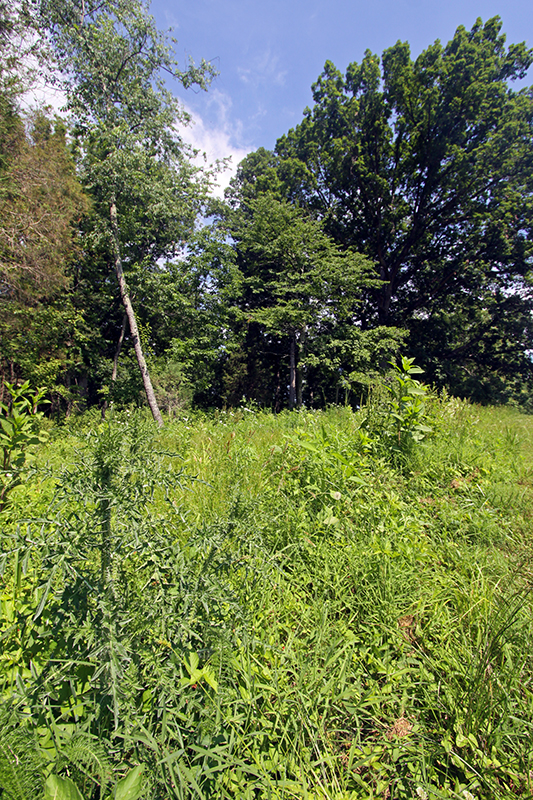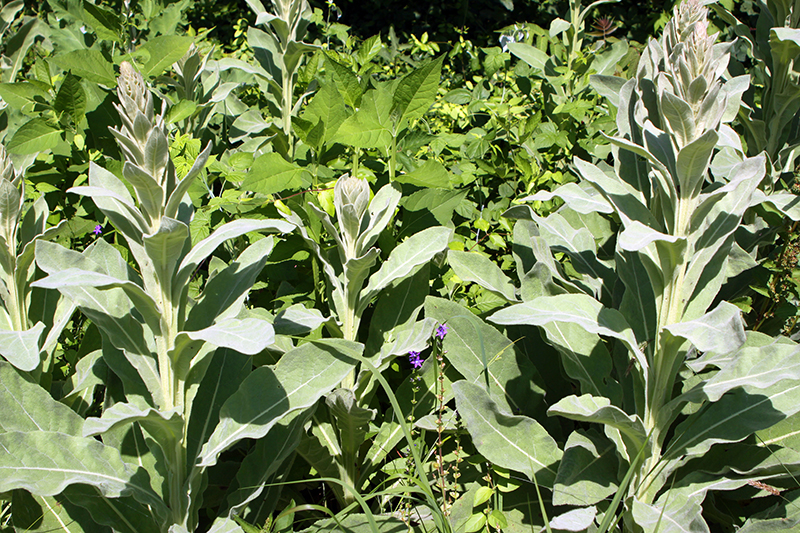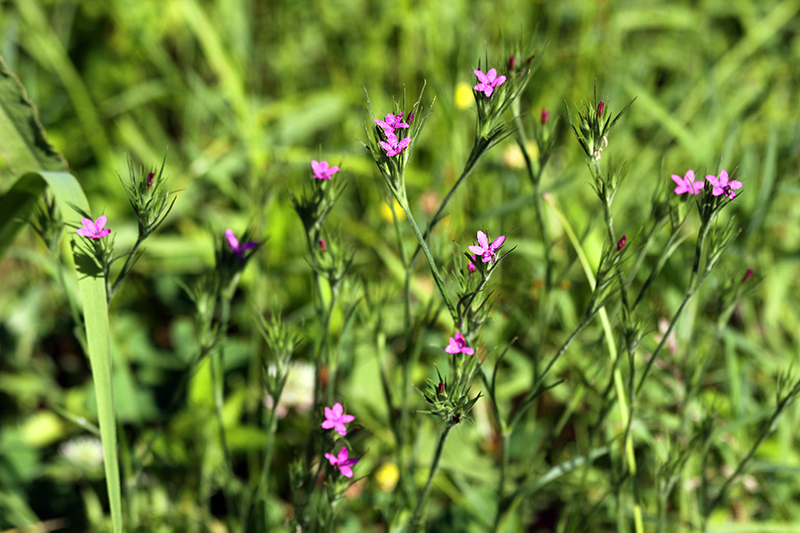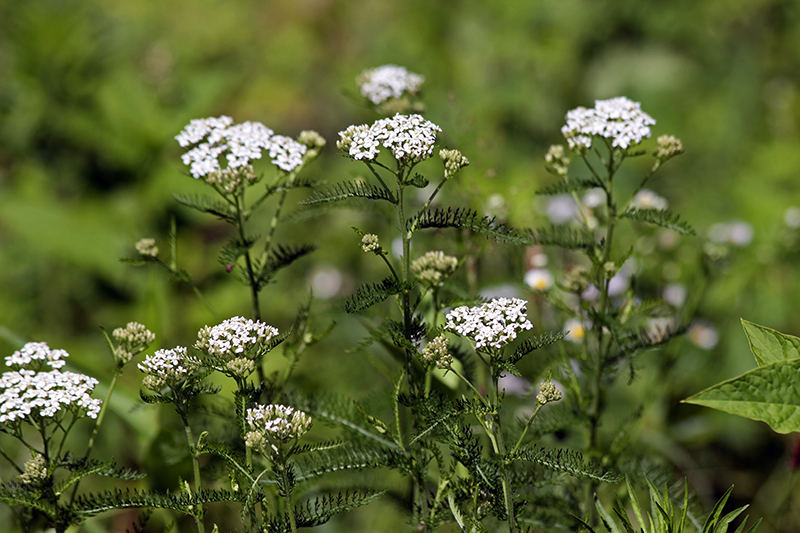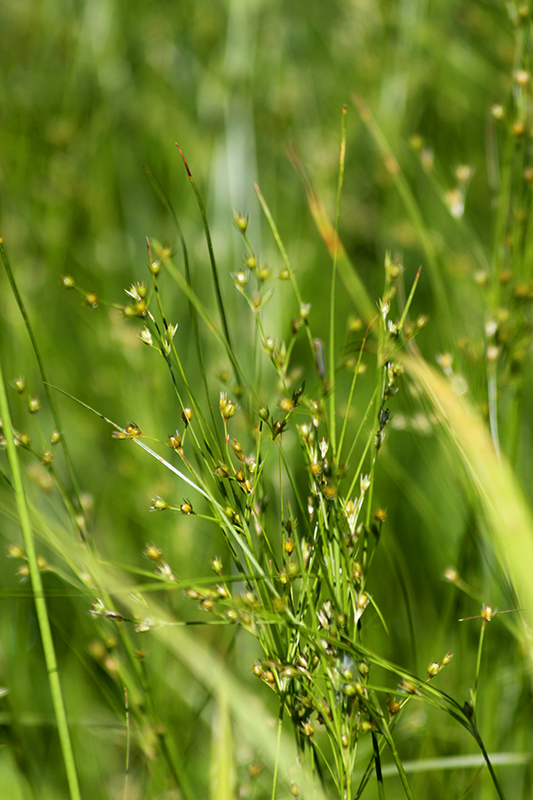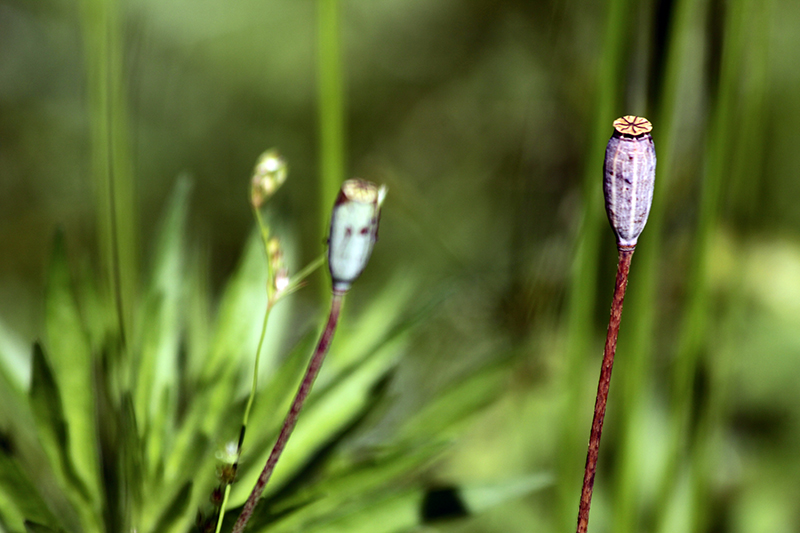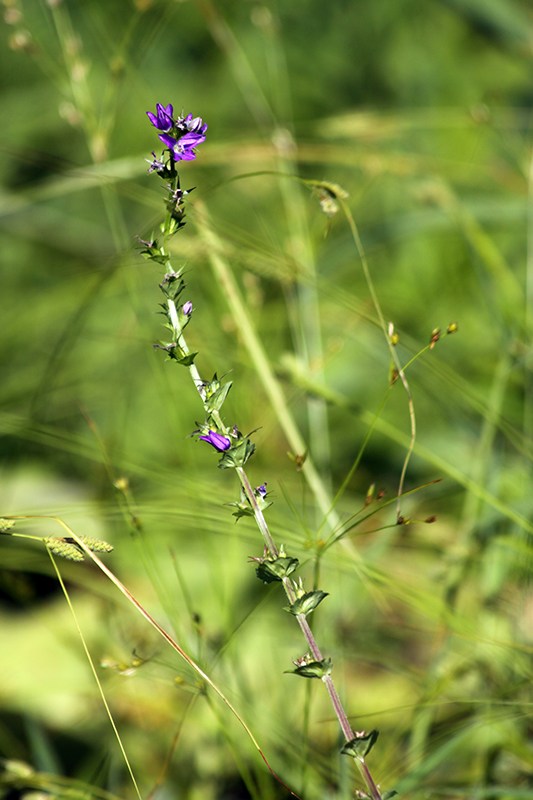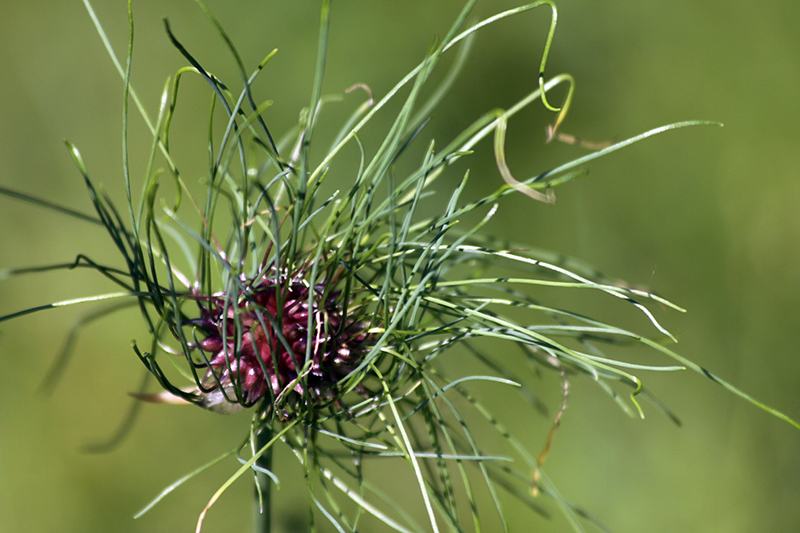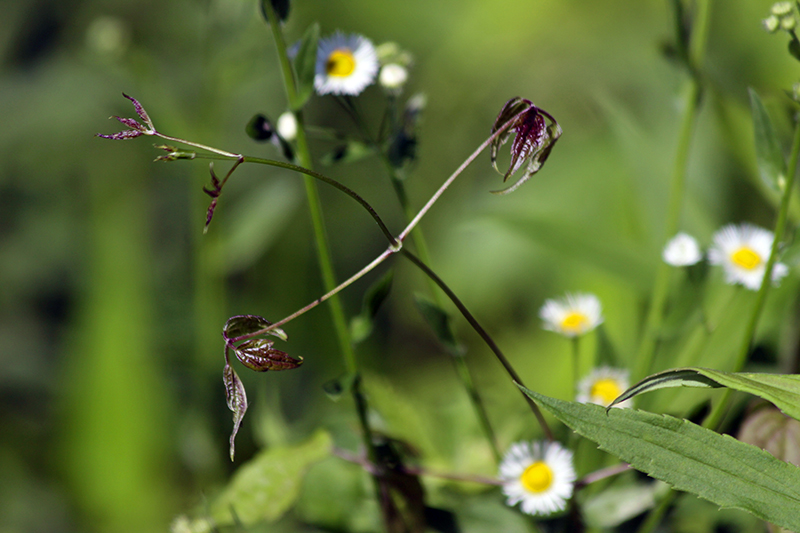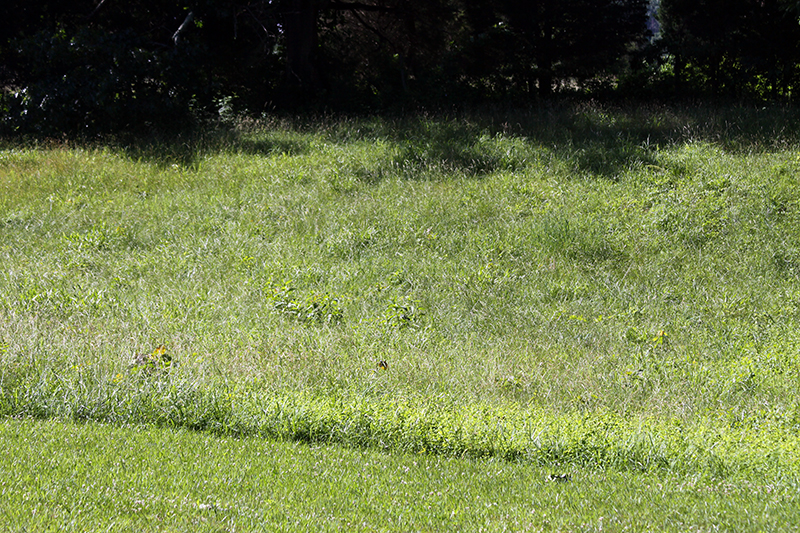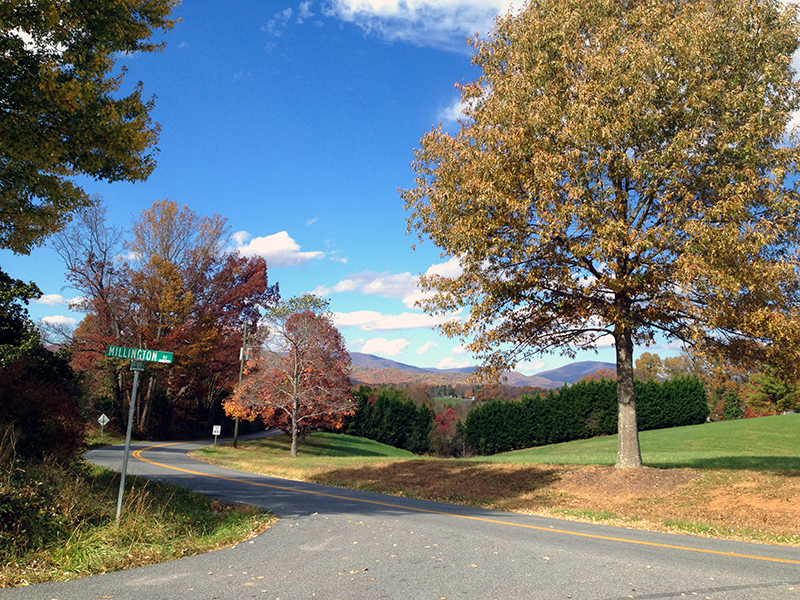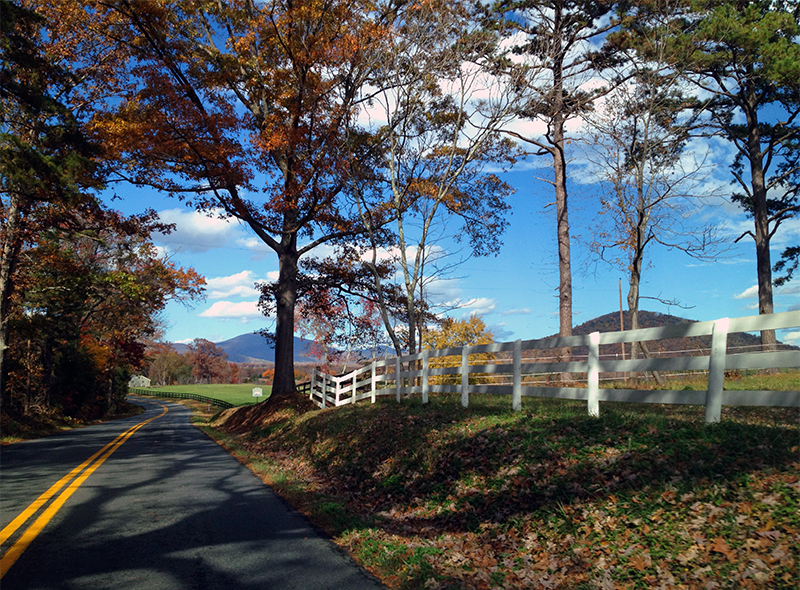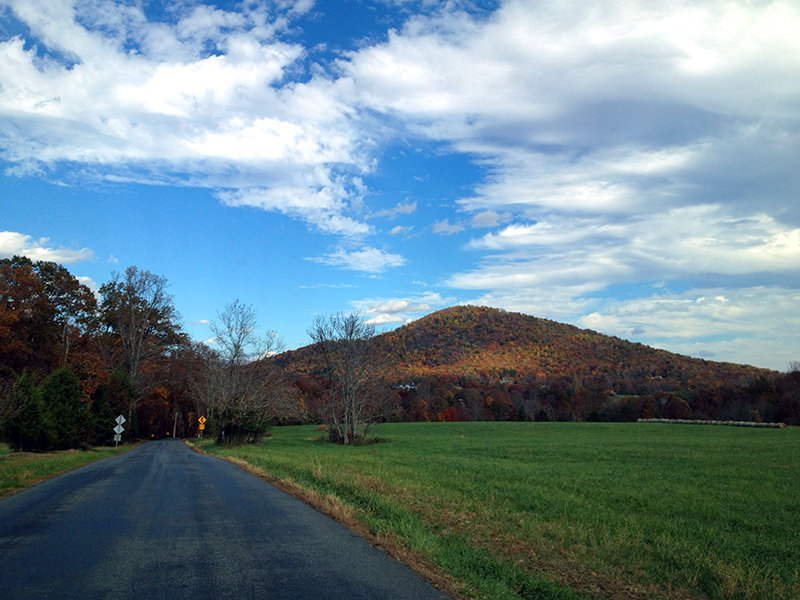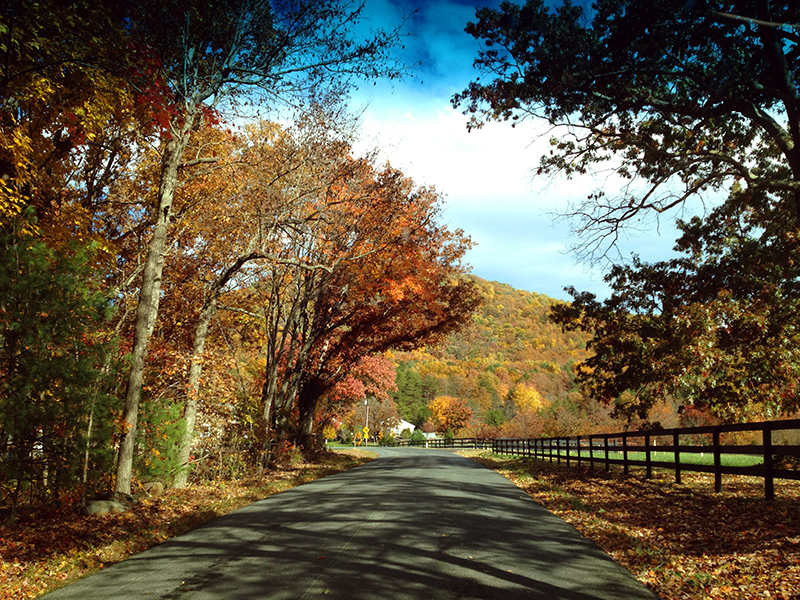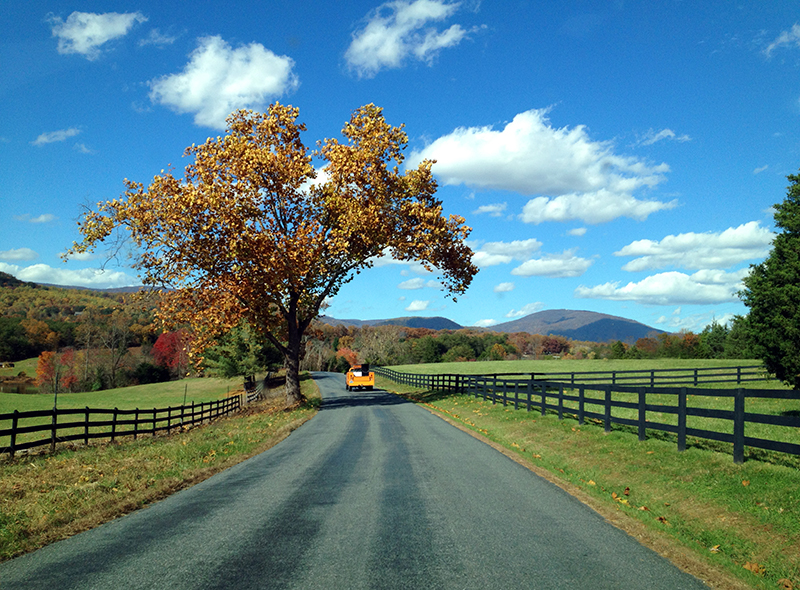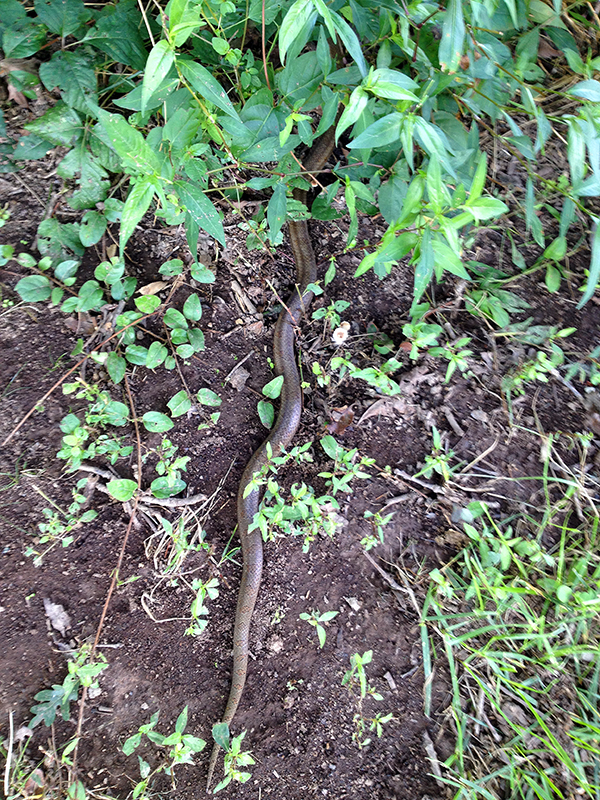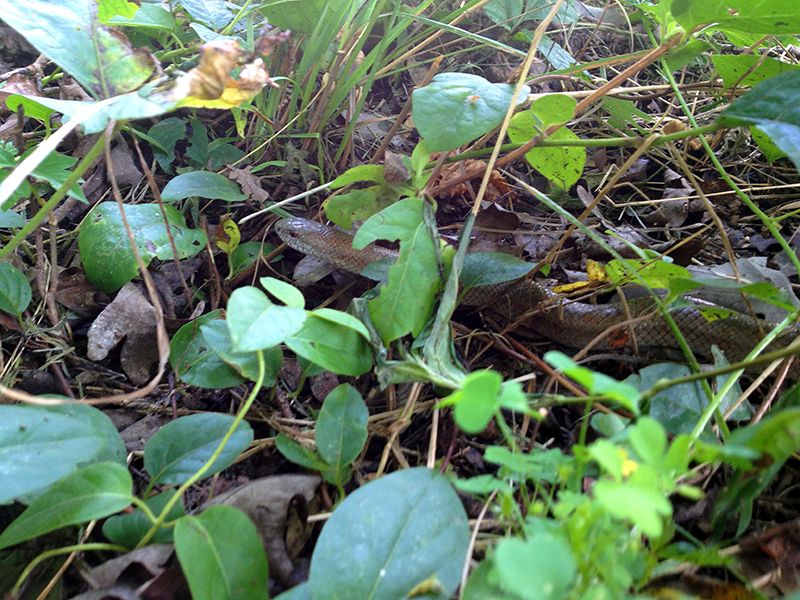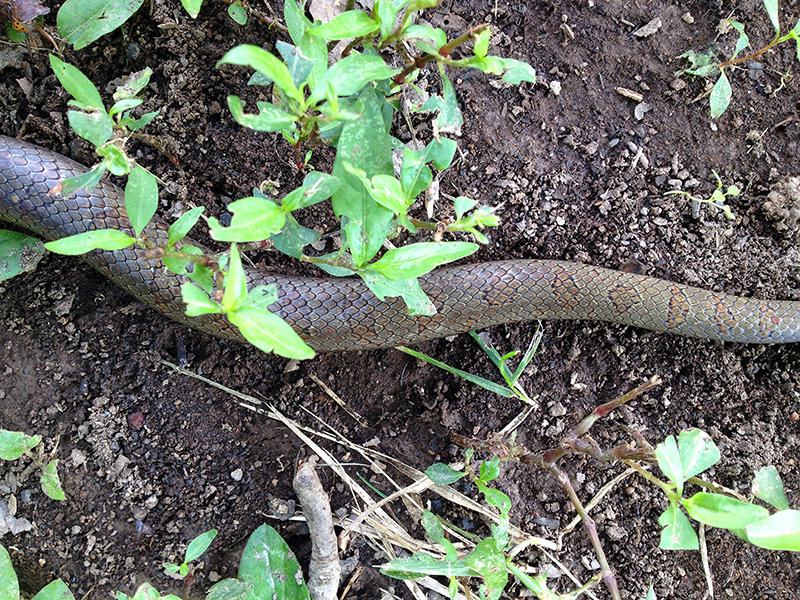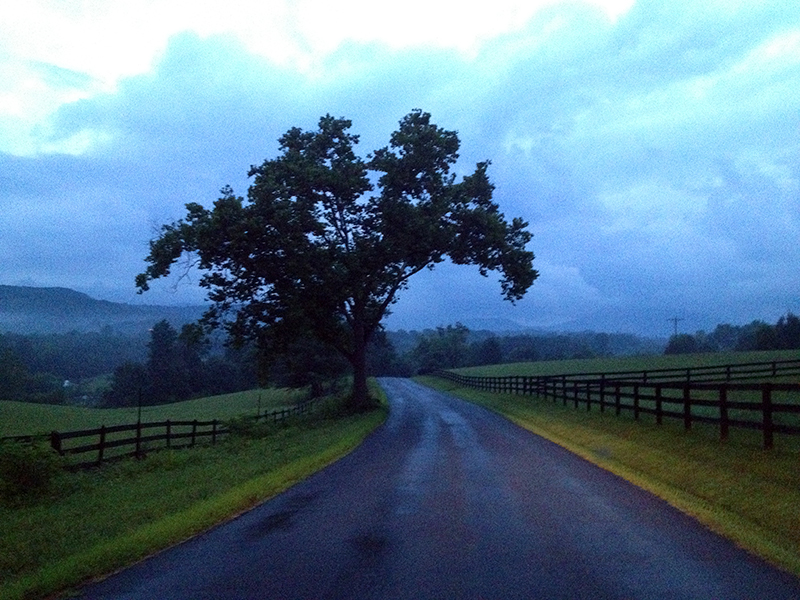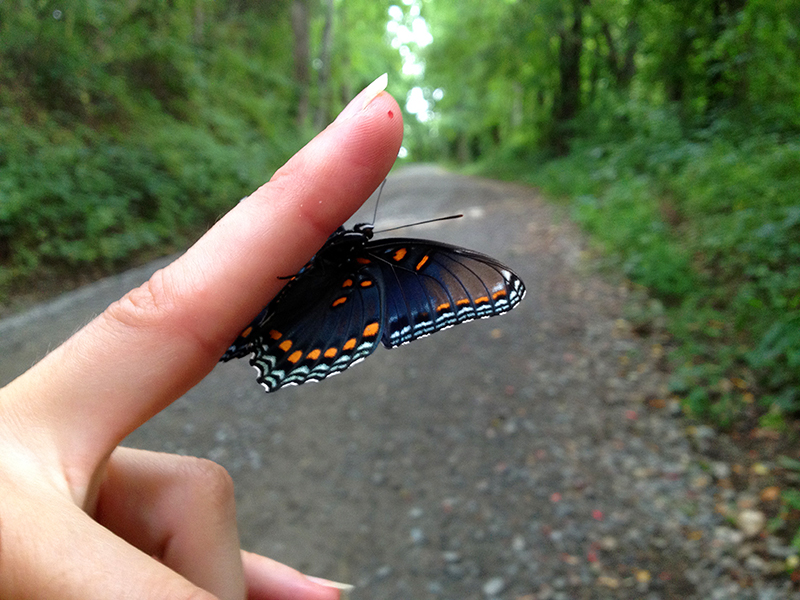Male widow skimmer (Libellula luctuosa) found in the new meadow garden.
Beautiful bug: Widow skimmer dragonfly
July 14th, 2014 § 0
My unintentional meadow garden
June 14th, 2014 § 4
Meadows are hot right now, with horticulturalists’ renewed focus on habitat preservation/creation and the rise of the “new perennial” gardening movement that showcases native and “wild-looking” plants in naturalistic compositions. Everyone loves a meadow—or at least the image of them as presented in aspirational garden porn—billowing fields of lively grasses punctuated with bright yellow, pink and white blooms that persist all summer long. 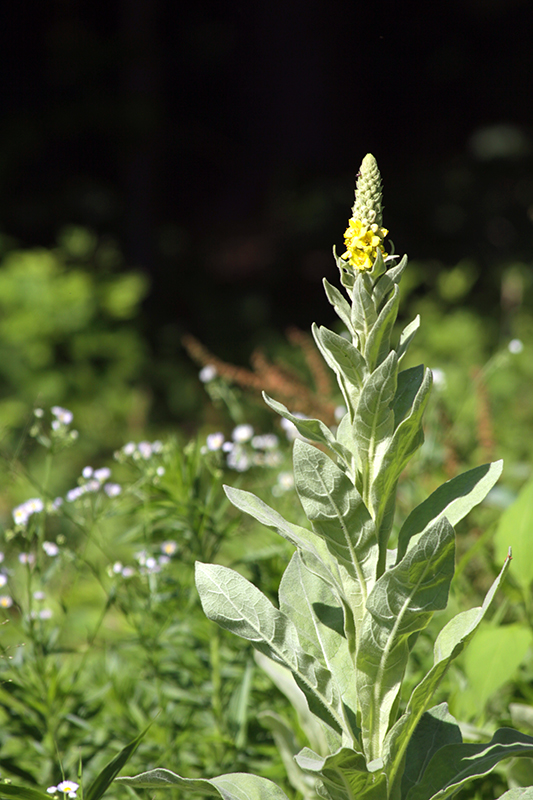
There are several ways to achieve the cultivated meadow look, and the most commonly accepted, and perhaps effective, method involves several rounds of herbicide spray that kill all existing plants back to bare dirt, a process that takes about a year in order to catch each wave of germination. The idea is to create a blank slate so that you may then, ideally in the fall, sow a mix of wildflower seeds that’s usually composed of annuals, to give you quick, first-year color, and perennials, which will take longer to get going but persist and multiply through the years. Without leveling the playing field with herbicide, the desired wildflower seeds most likely wouldn’t be able to germinate and out-compete the existing vegetation.
All this is fine, and I’ve seen some lovely meadows created this way. But the idea of mass herbicide spray doesn’t sit well with me, nor does watching vast swaths of ground turn brown and shrivel, taking with it the native plants in all their diversity only to be replaced with a select blend of imports. As much as I would love to try creating a wildflower meadow, and still may, I haven’t yet been able to reconcile the steps I’d have to take to get there.
But as I was mulling this gardener’s quandary, a wildflower meadow was quietly forming right in my own yard with almost no help from me. It happened in the transitional zone between the forest and my mowed field, on a patch of ground that had been thickly colonized by invasive alanthus trees, honeysuckle, and brambles. This area was cleared back to bare dirt two winters ago, and I basically just left it alone.
Last year I noticed tons of mullein plants sprouting in the bare dirt. Mullein are the pioneers of the plant world—they are among the first plants to recolonize disturbed ground. They are biennials, and in their first year form a rosette of soft, fuzzy grey-green leaves. The second year the plants shoot tall yellow flower stalks high into the sky. Mullein has a long and respected heritage in herbal medicine, and is commonly used to treat disorders of the respiratory system. If you believe in the doctrine of signatures, the leaves of mullein are lung-shaped, which indicates that they are beneficial to that part of the body.
I think mullein are incredibly beautiful, and so I refrained from mowing them last year in order to see them bloom this year. Well, in not mowing this patch of ground, I unintentionally created what has turned out to be a fascinating wildflower meadow—no herbicide needed. In addition to purple clover, wild strawberries, and countless other plants, here are just a few of the flowers I’ve identified in my meadow:
Dianthus armeria, or Deptford Pink, a relative of Sweet William
Achillea millefolium, common yarrow
Some kind of very pretty, low-growing grass that reminds me of the “fiber optic grass” sold in nurseries. Any ideas what it is?
Papaver aculeatum (I think), orange poppy, gone to seed
Triodanis perfoliata, Venus Looking Glass
Wild onion, gone to seed
Parthenocissus quinquefolia, Virginia creeper, with Erigeron strigosus, Prairie Fleabane in the background
I look forward to watching this meadow progress through the summer, but in the meantime I find it so striking that the former hayfield, above, which I bush hog every now and then, is so much less botanically diverse than the new meadow, below, which sits just a few feet away. I am not sure if this is because the hayfield was created (how are hayfields created, anyway?) once upon a time to be primarily grasses, but I would have thought that by now it would have reverted to a more wild state. Perhaps the grass cover is too thick to allow other plants to germinate? Botanical succession—how plants reclaim and populate land, which come first, and how they create ideal conditions for each successive wave of new plants—fascinates me, and I am glad to have these uncultivated meadows that provide a wonderful laboratory to watch and learn from this process.
Daily commute: Peak fall color
November 1st, 2013 § 2
I’m going to go ahead and call today as peak fall color. I’ve been watching the leaves as they’ve turned, and though they’ve been pretty for weeks, today they became spectacular. Sometimes I lament living 25 minutes from town, but on days like today, I pinch myself in disbelief that I get to live here. I can’t make the drive last long enough as I struggle to keep the car on the road while snapping iPhone photos out the window. Here’s a taste of what I saw while driving home today:
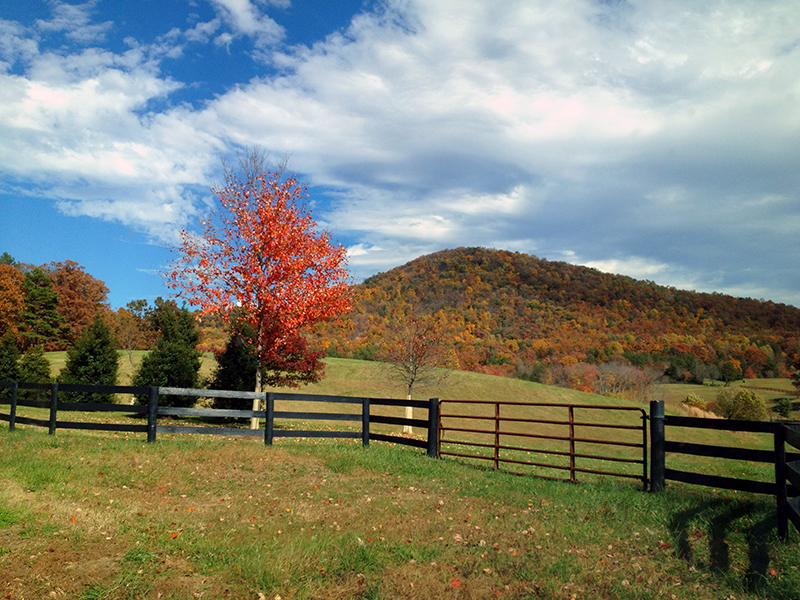
Birthday snake
September 2nd, 2013 § 1
This morning, on the way to the compost pile, I came across this snake stretched across the path into the woods. By the time I ran for my camera it was fast disappearing into the poison ivy.
At first glance I suspected a copperhead, based upon the coloration, but a quick look at its head told me it was no viper.
Had to go to my snake book for an i.d. I think it’s a mole kingsnake. I’ve never identified this particular snake around here, so it’s one for the life list. Apparently they live mostly underground and are often unearthed by farmers’ plows. They are superb burrowers, which fit this snake’s habit as it disappeared into the duff within seconds of taking its photo.
Happy birthday to me.
Daily commute
July 11th, 2013 § 0
Red-spotted purple
July 4th, 2013 § 0
I was walking with Tuck near here the other night and came across the most beautiful butterfly in the middle of a gravel road. It was one I didn’t recognize, which is always exciting.
It was dark in the woods so this butterfly’s colors are hard to see, but it was the most amazing shade of navy blue fading into bright, iridescent turquoise. I’d never seen a live butterfly in this particular color. True blue (not purple-blue) is such a rare color in the natural world that it doesn’t seem real when one sees it.
I very gently coaxed it on my hand so I could move it off the road, and saw its underside was equally beautiful. Sorry for the unintentional flip off—that was the finger it chose!
After taking these shots so I could ID the butterfly later, I put it on the bank and went on my way, very, very happy to have seen for just a few minutes something of such incredible beauty on my evening walk.
The trip was made even more joyful when I flushed a few quail out of a hedgerow beside the road. This was wonderful to see as quail are really in trouble in Virginia. The Department of Inland Game and Fisheries reports, in their Northern Bobwhite Quail Action Plan for Virginia:
Populations of northern bobwhite quail and other bird species with related habitat requirements have experienced severe long-term declines in Virginia over the past 50 years. In colonial times, farming created habitats that began to favor quail. As land was cleared and farmed, quail populations flourished. For perhaps 200 years or more, quail were one of the most common birds of the rural Virginia landscape. During the first half of the 20th century, as a shift from a rural-farm to urban-industrial economy began, idled and abandoned farms continued to support quail populations. However, since then major land use changes have taken place. Virginia’s agricultural landscape became dominated by large, intensively managed crop fields, fescue pastures, and hayfields.
Total farmland acres declined. In 1900, approximately 80% of Virginia’s landscape was in open agricultural land. Today agricultural lands make up only 34% of our landscape. Many of the formerly open farm fields are now dominated by intensively managed pine forests. While cut-over timber lands still provide some early-succession cover, plant diversity is low and productivity for quail is poor. The loss of early succession habitat, particularly nesting cover and brood range, has been identified as the most significant factor limiting quail populations. The bobwhite is a legacy species in Virginia and their decline has led to concerns about ecological, economic, and recreational impacts throughout rural Virginia.
Anytime you can spot a threatened species in the wild is encouraging. It makes me glad to live in an area that’s still suitable to sustaining important wildlife biodiversity.
But back to butterflies…at home I got out my field guide and opened right to the page with this butterfly on it. Weird. Anyway, it is a red-spotted purple, which is supposedly common in this area though I have never come across one until now. Strange name, too, for a blue butterfly with orange spots!
And then yesterday I was walking in the house and saw a red-spotted purple flying in my flower garden. Now that I know what it is, it’s easy to identify by its more rounded lower wings that lack the extended hind wings that identify swallowtails, below:
(Image source: http://www.edupic.net/lifecycle.htm)
And that’s your daily lepidoptery lesson, with a little quail digression!

